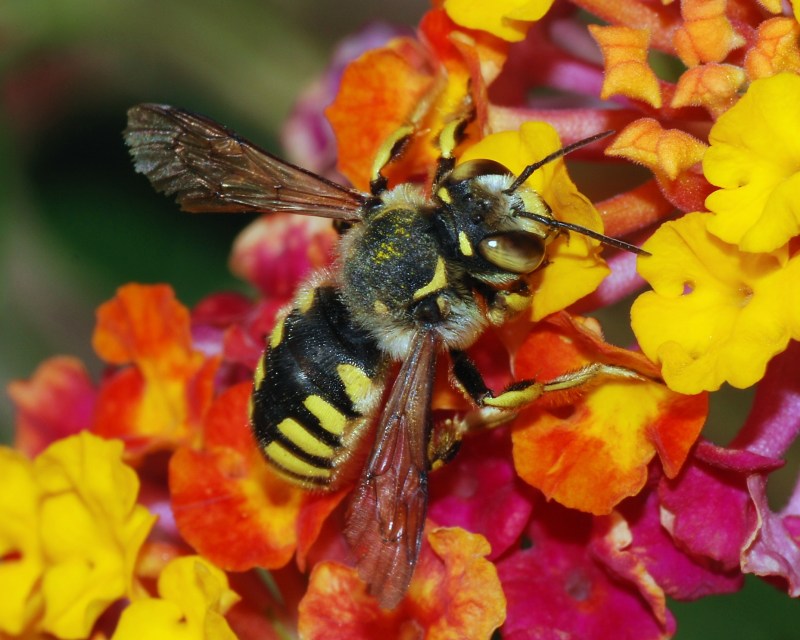Last Sunday, UNAFF sponsored a screening of Why are the Bees Dying? in Cubberley Auditorium. The German documentary was directed by Christoph Wuerzburger, and focuses on today’s alarming decline in the bee population, particularly in the experience of German beekeepers.
Christoff Koch, a beekeeper trained at the Institute for Apiculture in Hohenheim, is one of the central sources in the documentary. His concerns are clear. On average, European bee colonies have been dying off at about twenty percent per year. In Germany, that figure reaches as high as fifty-percent. Koch argues that this mortality rate is unsustainable, and asks us to consider: What would our reaction be if half of all cows were found dead in their sheds?
The narrative goes into detail on the significance of this bee-crisis. Bees are as important to our agricultural industry as traditional livestock, if not infinitely more so. Without bees, a third of the food we eat would be unavailable. Bees pollinate not only most of the fruits and vegetables we enjoy on a daily basis, but also the crops used to feed livestock — another big chunk of the modern diet.
So why is this happening? Between 1945 and 2007, the bee population has fallen from around four and a half million colonies to just two million, and in the U.S., an average of thirty percent of bee colonies die off every year. The drop off in the bee population has long been written off as mysterious, and yet a huge body of research claims that the causes of en masse hive death are not just extremely knowable, but extremely controllable. While there are certainly other factors to consider, most sources agree that the three biggest causes for concern are toxic pesticides, parasites, and environmental dysfunction.
- Pesticides
The word “neonicotinoids” is pretty meaningless for daily use, but it defines one of the most important causes of death for tens of millions of bees over the last few years. Neonicotinoids are chemical poisons that target nerves, and have a multitude of possible effects. Bees exposed to neonicotinoids have shown damaged sensory reception and memory, impaired immune systems; they consume less food, and in some cases, can’t even fly after exposure.
Researchers from Penn State have found that the pollen collected by any given colony has more than six separate pesticide contaminants. Growth regulators, insecticides (like neonicotinoids), fungicides, chlorine compounds and more are spread across U.S. crops in levels that can be deadly, and up to ninety-five percent of these chemicals ends up in the wider environment. When bees collect pollen from plants with high concentrations of pesticides, they usually die. When they collect from plants with lower concentrations, the effects can range from confusion and chemical intoxication (resulting in an inability to navigate or communicate) to contamination of the entire hive, and eventual abandonment of the nest.
Neonicotinoids and other pesticides are a serious threat, and their dangers extend far beyond insect population. Their impact on bees — and therefore on global food production — mirrors the threat analyzed by Jean-Marc Bonmatin, a member of France’s National Center for Scientific research. He claims, “We are witnessing a threat to the productivity of our natural and farmed environment equivalent to that posed by organophosphates or DDT. From protecting food production, the use of neonicotinoid insecticides is threatening the very infrastructure which enables it.”
- Parasites
The most destructive parasite for bees is, funnily enough, varroa destructor. It’s a bloodsucker that mainly compromises the bees’ immune systems and is a vector for viruses. While the varroa parasite is deadly in its own right, especially for larvae, one of its most harmful effects is indirect. A bee with a compromised immune system and various viruses will still go to collect pollen. There, it may be exposed to further immune damage from pesticides, and if it can even find its way back to the hive, will continue to spread disease.
- Environmental Dysfunction
Monoculture plays a huge part in large-scale bee death. Monoculture describes the agricultural practice adopted after World War Two in which farmers produce massive amounts of a single crop, rather than the natural diversified farming bees previously worked in tandem with.
In addition to the 300 percent increase in crop production since the 1950’s, this single-crop system creates a nutrition “desert,” that provides only a small portion of the necessary protein and carbohydrates that bees feed on. Farmers used to bring bees to intentionally pollinate entire fields of diverse crops, but now, 1.5 million hives can only pollinate a single massive crop field. By eliminating “cover crops” (as opposed to the primary crop in a given field), and increasing the distance between diverse possible nutrient sources, farmers have done away with some of the most important food sources for bees such as alfalfa and clover, and replaced them with endless supplies of pesticide-laden crops.
The bee crisis paints a dire picture for our ecosystems, and indeed our entire method of food production. Nerve-targeted pesticides, dwindling natural pollen sources and the prevalence of parasite-related immune damage have all contributed to a bee population half of what it was just a few decades ago. Bees play an instrumental role in global environmental balance, and researchers like Marla Spivak, Eric Mussen, Dave Goulson all insist that we, as a culture, need to turn the tide in any way possible.
So how can you as an individual contribute to bee health?
Marla Spivak emphasizes that the best way to break this cycle is to break up the nutrition deserts that are so detrimental to bee colonies. Planting flowers and crops native to an area helps balance the disproportionate amount of very specific food-crops.
Individuals can ensure the presence of native plants in whatever area they live in (the first step to remedying the “deserts”) and, most importantly, they can ensure that these plants are safe to pollinate.
Contact Maximiliana Bogan at ebogan ‘at’ stanford.edu.
